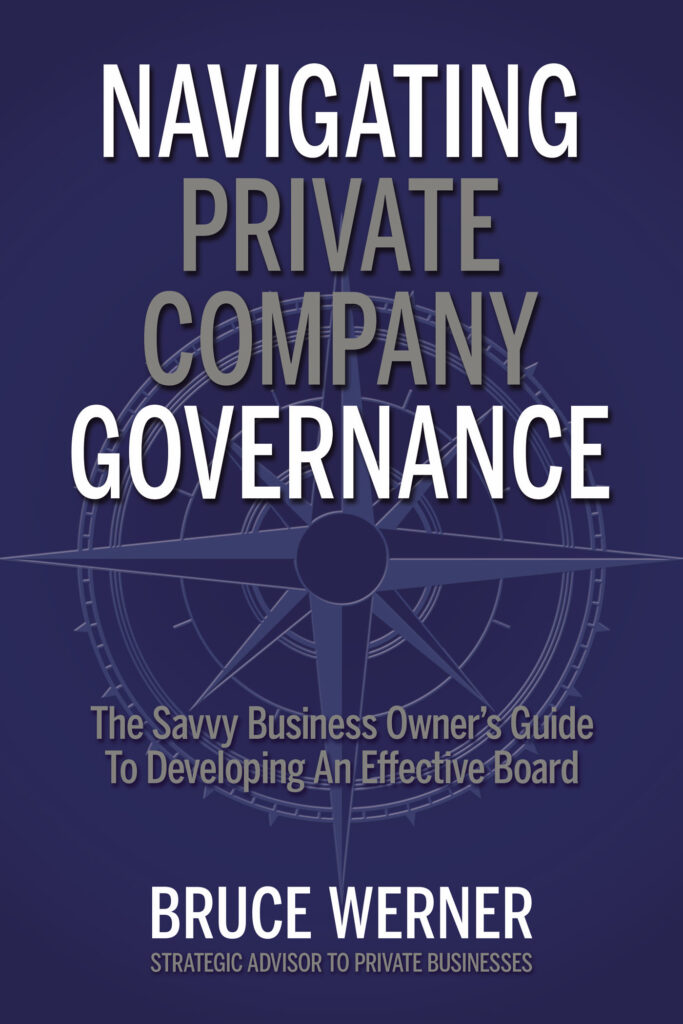Most private company boards are advisory, not fiduciary boards, and for a good reason.
“Owners want advice, but they don’t want to give up control to outsiders,” says Bruce Werner, strategic advisor to private company owners and author of the book Navigating Private Company Governance: The Savvy Business Owners Guide to Developing An Effective Board (2024, Indie Books International.)

Werner’s book quotes a startling statistic: “From 2019 to 2021 there was a 52 percent increase globally in organizations utilizing advisory boards as part of their governance structure.”
“Every private company has its own set of ownership issues, competitive dynamics, and resource constraints to optimize,” says Werner. “As you would expect, private companies vary widely on what they want their boards to accomplish. Setting these priorities starts with understanding the basics of governance.”
Werner is often asked: If you are a privately held company, when is the right time to have a board of directors?
“That conversation usually starts when the owners realize that they and their team lack the experience and knowledge needed to address future challenges,” says Werner. “They realize they need help, and project-oriented consultants don’t seem to be the right answer.”
As an independent consultant, Werner helps owners address their governance, strategy, capital, talent, and succession issues. This work is based on several decades of deep operational experience. After selling the family business, he started and built businesses in finance, energy, retail, and technology, in addition to being a partner in a private equity fund. Werner specializes in working with family businesses as an advisor and board member.
“There are three functions that are critical for private company boards to address: approving strategy and financial objectives; advising management; and being on top of oversight, risk management, and compliance,” says Werner. “Focusing on these functions can pay huge dividends, and they are a measure of the board’s effectiveness. While agendas vary, each meeting should include elements of these functions.”
The biggest error a private company should avoid is choosing the wrong type of board. Werner says advisory boards fall into three main categories:
Consulting boards. These boards meet one or two days per year (e.g., when there is a pressing issue). The owners buy a day of consulting time from the outside advisors to focus on the issue of the day. Businesses with $20 million to $50 million in revenue may start with a consulting board before moving up. Businesses under $10 million typically do not have functioning boards.
Junior advisory boards. As businesses grow, junior advisory boards pay more attention to the following issues:
- Management depth
- Capital structure
- Long-term planning
- Competition
- Organizational capabilities
- Market structure
- Crisis management (usually involving the bank)
Advisors are raising important questions and helping to solve existential problems. However, the discussions often tiptoe around delicate issues like management performance, compensation, and succession planning.
Full advisory boards. This type of board is most comparable to a fiduciary board. Outsiders are actively engaged in succession planning, management, and performance evaluation. This is more common with companies that bring in several hundred million dollars in revenue because the complexity forces ownership to seek outside help.
Werner stresses that the sooner the appropriate type of board is determined, is installed, and gets in sync with the needs of the company, the sooner they can get to the important work of growing the business, preparing it for sale, or transitioning it to the next generation.
